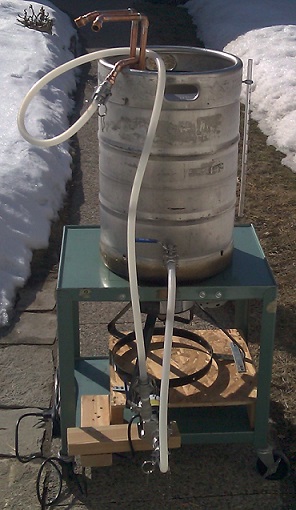TheBrewinator
Well-Known Member
I know there is a lot of information out there and I have tried to read as much as possible as I can as I have formulated my plan to convert my current keggle (serves as both HLT and boil kettle) into an electric kettle.
I am currently renting and will be for the foreseeable future so I have decided to go with the spa panel approach since I will be able to take it with me. My basement has an older 3 prong dryer on a non-GFCI 30A breaker. My plan is to run 10/3 soow from the dryer outlet to the spa panel to put my brewing operation under GFCI protection. From there, I'm still deciding on what kind of controller to use (its going to be simple) to control the element. I'm going to be buying the 5500W element kit from the electric brewery.
Can anyone see any fatal flaws in my plan to plug my spa panel into the existing dryer outlet and then plug in the controller/element into an outlet I will put in the panel as many others have.
As far as the pump goes, I'm not worried about that because I have an outdoor GFCI plug that is part of the townhouse for that.
Thanks for taking the time to tell me this won't work or it sounds reasonable.
I am currently renting and will be for the foreseeable future so I have decided to go with the spa panel approach since I will be able to take it with me. My basement has an older 3 prong dryer on a non-GFCI 30A breaker. My plan is to run 10/3 soow from the dryer outlet to the spa panel to put my brewing operation under GFCI protection. From there, I'm still deciding on what kind of controller to use (its going to be simple) to control the element. I'm going to be buying the 5500W element kit from the electric brewery.
Can anyone see any fatal flaws in my plan to plug my spa panel into the existing dryer outlet and then plug in the controller/element into an outlet I will put in the panel as many others have.
As far as the pump goes, I'm not worried about that because I have an outdoor GFCI plug that is part of the townhouse for that.
Thanks for taking the time to tell me this won't work or it sounds reasonable.



